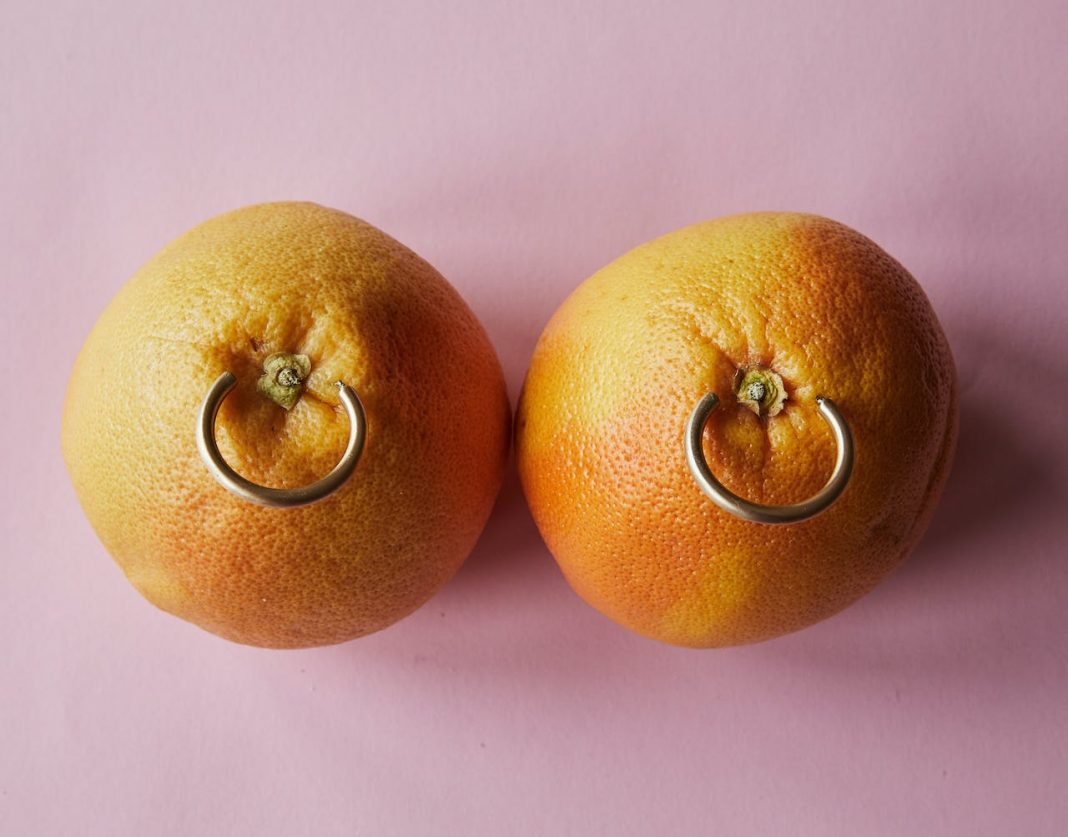Fourchette Piercing – In recent years, body modifications have become increasingly popular as people seek new ways to express themselves and embrace their individuality. From elaborate tattoos to intricate piercings, individuals are turning to these forms of self-expression as a way to enhance their personal style. One such piercing that has gained attention in recent times is the fourchette piercing. This unique and edgy genital piercing offers a bold and distinctive way to embrace body modification.
In this article, we will delve into the world of fourchette piercings, exploring what they are, how they are done, the risks involved, and the potential benefits they offer.
Table of Contents
What is a Fourchette Piercing?
A fourchette piercing is a type of genital piercing that is done on the posterior wall of the vagina, near the rear entrance. Unlike more common genital piercings such as the clitoral hood or labia piercing, the fourchette is positioned horizontally, offering a unique and eye-catching placement. This piercing is often sought after for its aesthetic appeal and the potential for increased sexual stimulation.
The Procedure
As with any piercing, it is crucial to find a professional and experienced piercer to perform the procedure. The first step in getting a fourchette piercing is ensuring proper hygiene and cleaning the area thoroughly. The piercer will then use a hollow needle to create a small hole in the posterior wall of the vagina. Once the hole is made, jewelry such as a curved barbell, captive bead ring, or labret stud is inserted. After the piercing is complete, it is vital to follow the aftercare instructions provided by the piercer for proper healing and to minimize the risks of infection or other complications.
The Risks and Considerations
While fourchette piercings can offer a unique and visually appealing modification, it is essential to be aware of the potential risks and complications involved. Infections, allergic reactions, and migration are some of the risks associated with this piercing. To minimize these risks, it is crucial to choose high-quality jewelry made from materials like surgical steel or titanium. Regular check-ups with a piercer or healthcare professional are also recommended to monitor the healing process and address any issues promptly.
Pain and Healing
One common concern when considering a fourchette piercing is the level of pain involved. Pain levels can vary from person to person, but generally, it is considered to be a moderate level of pain during the piercing process. After the piercing is done, the healing time can range from a few weeks to a few months, depending on individual factors such as healing ability and aftercare practices. It is important to follow the aftercare routine provided by the piercer, which often includes cleaning the piercing with a saline solution and avoiding tight clothing in the area.
Sexual Considerations and Benefits
One of the significant factors that attract individuals to the fourchette piercing is the potential sexual benefits it offers. This piercing can increase sensitivity in the area and provide enhanced pleasure for both partners during sexual activities. However, it's important to note that not everyone may experience the same level of sexual benefits, as individual responses can vary. Open and honest communication with sexual partners about the piercing and any potential concerns is crucial for a fulfilling and enjoyable experience.
See Also: Eczema and Sleep: The Crucial Role of Choosing the Right Bedding
Jewelry Options and Styles
Fourchette piercings offer a variety of jewelry options to choose from. Curved barbells, captive bead rings, and labret studs are commonly used for this type of piercing. When selecting jewelry, it is essential to choose pieces that fit properly and do not cause irritation or discomfort. Materials such as surgical steel, titanium, and gold are often recommended for their hypoallergenic properties and durability.
How much does a fourchette piercing cost?
Well, the cost of a fourchette piercing can vary depending on several factors. These factors include the location and reputation of the piercing studio, the experience of the piercer, and the type of jewelry chosen for the piercing.
On average, you can expect to pay anywhere from $50 to $150 for a fourchette piercing. This price typically includes the piercing procedure itself and the initial jewelry. However, it's important to note that additional costs may arise if you decide to upgrade to more expensive jewelry or if you require any follow-up visits or aftercare products.
Aftercare and Maintenance
Proper aftercare is crucial for the healing and maintenance of a fourchette piercing. Cleaning the piercing regularly with a saline solution and avoiding sexual activities during the healing process are essential steps to prevent infections and promote healing. It is important to follow the aftercare instructions provided by the piercer diligently. Regular check-ups with a piercer or healthcare professional are also recommended to ensure the piercing is healing correctly and to address any concerns or complications promptly.
Are There Any Risks Involved?
When considering a fourchette piercing, it is important to understand that there are potential risks and complications associated with this type of body modification. While many individuals have successful experiences with their piercings, it is crucial to be aware of the possible risks and make an informed decision. Here are some key risks to consider:
1. Infection: Like any piercing, there is a risk of infection with a fourchette piercing. The area is prone to bacteria, and if proper aftercare practices are not followed, an infection can occur. Symptoms of an infection may include redness, swelling, pain, and discharge. It is vital to clean the piercing regularly and follow the aftercare routine provided by the piercer to minimize the risk of infection.
2. Allergic reactions: Some individuals may experience allergic reactions to certain materials used in the jewelry, such as nickel or certain types of metals. This can lead to discomfort, redness, and swelling. To minimize the risk of allergic reactions, it is important to choose high-quality jewelry made from hypoallergenic materials like surgical steel or titanium.
3. Migration and rejection: In some cases, the body may reject the piercing, leading to migration or rejection. This occurs when the body sees the jewelry as a foreign object and attempts to push it out. Signs of migration or rejection include the jewelry moving or becoming displaced, excessive pain, and prolonged healing. If you notice any of these signs, it is essential to seek professional help and consider removing the piercing if necessary.
4. Scarring: As with any piercing, scarring is a possibility. Depending on individual healing factors and aftercare practices, scarring may be minimal or more pronounced. Taking care of the piercing during the healing process and following the aftercare instructions can help minimize the risk of excessive scarring.
5. Discomfort during sexual activities: While some individuals report enhanced sexual pleasure with a fourchette piercing, others may experience discomfort or pain during certain sexual activities. Each person's body is unique, and it is important to have open and honest communication with sexual partners to ensure a comfortable and enjoyable experience.
It is crucial to weigh these risks against the potential benefits and personal preferences. Thoroughly researching, consulting with professional piercers, and considering individual circumstances can help in making an informed decision about whether a fourchette piercing is right for you.
Also Like: Can You Smoke Shrooms? Side Effects Of Smoking Magic Mushrooms?
Retiring the Piercing: Saying Goodbye to Your Fourchette Piercing
Deciding to retire a fourchette piercing is a personal choice requiring careful consideration. Seeking professional guidance from an experienced piercer is crucial to ensure a safe and painless process. Removing the jewelry yourself can lead to complications and tissue damage.
Follow these steps when retiring a fourchette piercing:
1. Consult a Professional: Schedule an appointment with a reputable piercer to assess the piercing's condition and determine if it's safe to proceed.
2. Evaluate Healing: Ensure the piercing has fully healed before removal; address any complications with the piercer.
3. Gentle Removal: Allow the piercer to expertly and gently remove the jewelry, minimizing discomfort.
4. Cleanse and Care: After removal, the piercer cleans the area and provides post-removal care instructions for proper healing.
5. Aftercare: Maintain aftercare practices, regularly cleaning with saline solution, and monitor for signs of infection or complications.
Retiring a piercing doesn't guarantee scar disappearance; healing varies. Consult a skincare professional if concerned about scarring. Make informed choices for a painless and safe retirement process.
Conclusion
Fourchette piercings are a unique and edgy form of body modification that offers individuals an opportunity to express their personal style and embrace their individuality. While they come with risks and considerations, when done correctly by a professional piercer and with proper aftercare, they can be a beautiful and empowering addition to one's body modification journey. As with any body modification, it is essential to thoroughly research and educate oneself before making a decision. Consultation with professional piercers and healthcare providers can also provide personalized advice and guidance based on individual circumstances.
Must Read: Major Signs and Causes of Heel Pain – Potential Tips to Avoid Them


